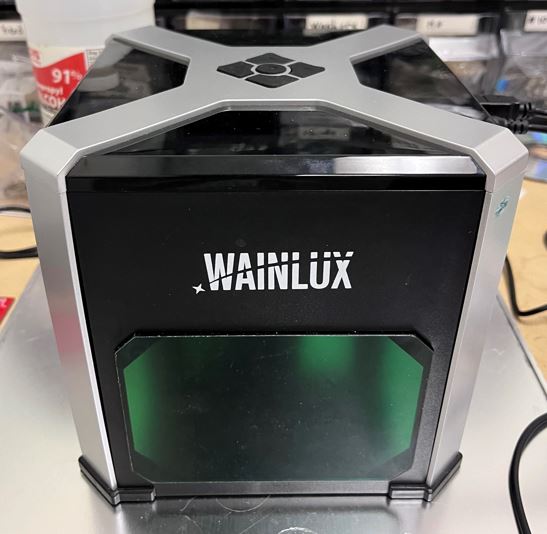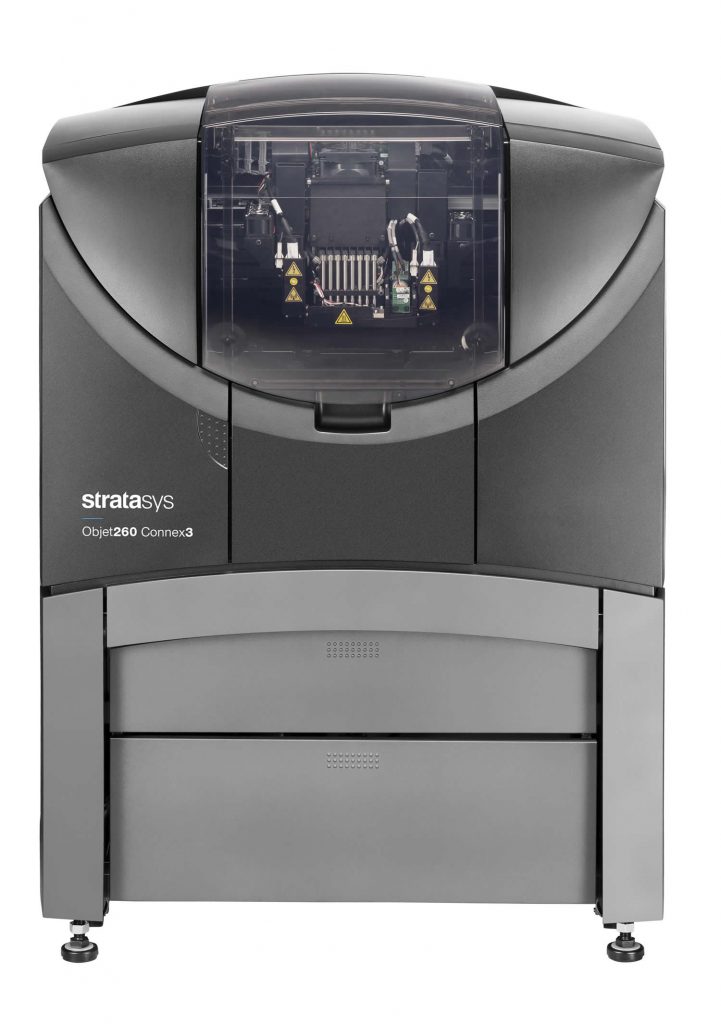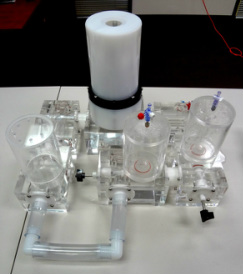Fabrication
Our heart valve prosthetic consists of four components: the nitinol stent, the medical cloth skirt, the bovine pericardium tissue leaflets, and the leaflet base. However, our work in the fabrication of our heart valve prosthetic only consists of the medical cloth skirt, the bovine pericardium tissue, and the leaflet base. The nitinol stent was manufactured off-site, so our team was only responsible for the fabrication of the other three components. All procedures and protocols were documented to allow for repeatability in the fabrication process.
 The medical cloth skirt and the bovine pericardium tissue leaflets were both fabricated using a Wainlux K6 laser cutter. We designed a test to determine the optimal settings required to cut the medical cloth and tissue. Our goal was to cut the materials as clean as possible while reducing the burning and scarring of the materials. Both components were successfully laser cut and the robustness of our protocols were proven when design changes were made and we were able to repeat the process.
The medical cloth skirt and the bovine pericardium tissue leaflets were both fabricated using a Wainlux K6 laser cutter. We designed a test to determine the optimal settings required to cut the medical cloth and tissue. Our goal was to cut the materials as clean as possible while reducing the burning and scarring of the materials. Both components were successfully laser cut and the robustness of our protocols were proven when design changes were made and we were able to repeat the process.
 The leaflet base was designed by our mentor Dr. Shouyan Lee and our job was to 3D print the leaflet base. We used the Stratasys Connex3 Objet260 to fabricate our part then we had to do a bit of post-processing to clean up the part due to its small dimensions. The leaflet base was designed with multiple small holes across its circumference to allow for assembly of our prototype. The holes had to be fully drilled out manually using a small drill bit to prevent damage to the leaflet base.
The leaflet base was designed by our mentor Dr. Shouyan Lee and our job was to 3D print the leaflet base. We used the Stratasys Connex3 Objet260 to fabricate our part then we had to do a bit of post-processing to clean up the part due to its small dimensions. The leaflet base was designed with multiple small holes across its circumference to allow for assembly of our prototype. The holes had to be fully drilled out manually using a small drill bit to prevent damage to the leaflet base.
Testing
Testing of our prototype consists of hydrodynamic performance tests and durability tests. We mainly focused on the hydrodynamic performance tests using a pulse duplicator, but future work will include full testing of our prototype including the durability tests using an accelerated wear tester. All testing of our device is done following ISO-5840 standards that determine the duration of tests and the required conditions the heart valve prosthetic must undergo.
 Hydrodynamic performance tests were done after the completion of multiple designs of our prosthetic. The goal of the hydrodynamic tests were to compare the properties of the leaflet and stent across different designs at physiological heart conditions. The flow was measured using a transonic flow meter to ensure accurate flow readings and reduce the amount of noise in the pulse duplicator system. Hydrodynamic testing involved each valve undergoing four different physiological heart conditions at 10 cycles each. During each test, we measured the cardiac output (L/min), the aortic pressure (mmHg), and the ventricle pressure (mmHg), etc (ISO-5840-2 F.2.3.4). Along with many data points recorded, videos were taken of the valve to observe the leaflet's kinematics including the commissure and nadir. Using the software, we are able to match the peak systolic pressure and the end diastolic pressure with the leaflet videos to ensure the heart valve prosthetic is functioning properly.
Hydrodynamic performance tests were done after the completion of multiple designs of our prosthetic. The goal of the hydrodynamic tests were to compare the properties of the leaflet and stent across different designs at physiological heart conditions. The flow was measured using a transonic flow meter to ensure accurate flow readings and reduce the amount of noise in the pulse duplicator system. Hydrodynamic testing involved each valve undergoing four different physiological heart conditions at 10 cycles each. During each test, we measured the cardiac output (L/min), the aortic pressure (mmHg), and the ventricle pressure (mmHg), etc (ISO-5840-2 F.2.3.4). Along with many data points recorded, videos were taken of the valve to observe the leaflet's kinematics including the commissure and nadir. Using the software, we are able to match the peak systolic pressure and the end diastolic pressure with the leaflet videos to ensure the heart valve prosthetic is functioning properly.
Regarding the durability testing, valves will be placed into the accelerated wear tester (AWT) and undergo 200 million cycles at 20 Hz. This test is to ensure the design is able to withstand the heart's physiological conditions for many years. After every 50 million cycles, the valve must be removed from the AWT and placed back into the pulse duplicator to ensure the heart valve still functions properly at the heart's physiological conditions.